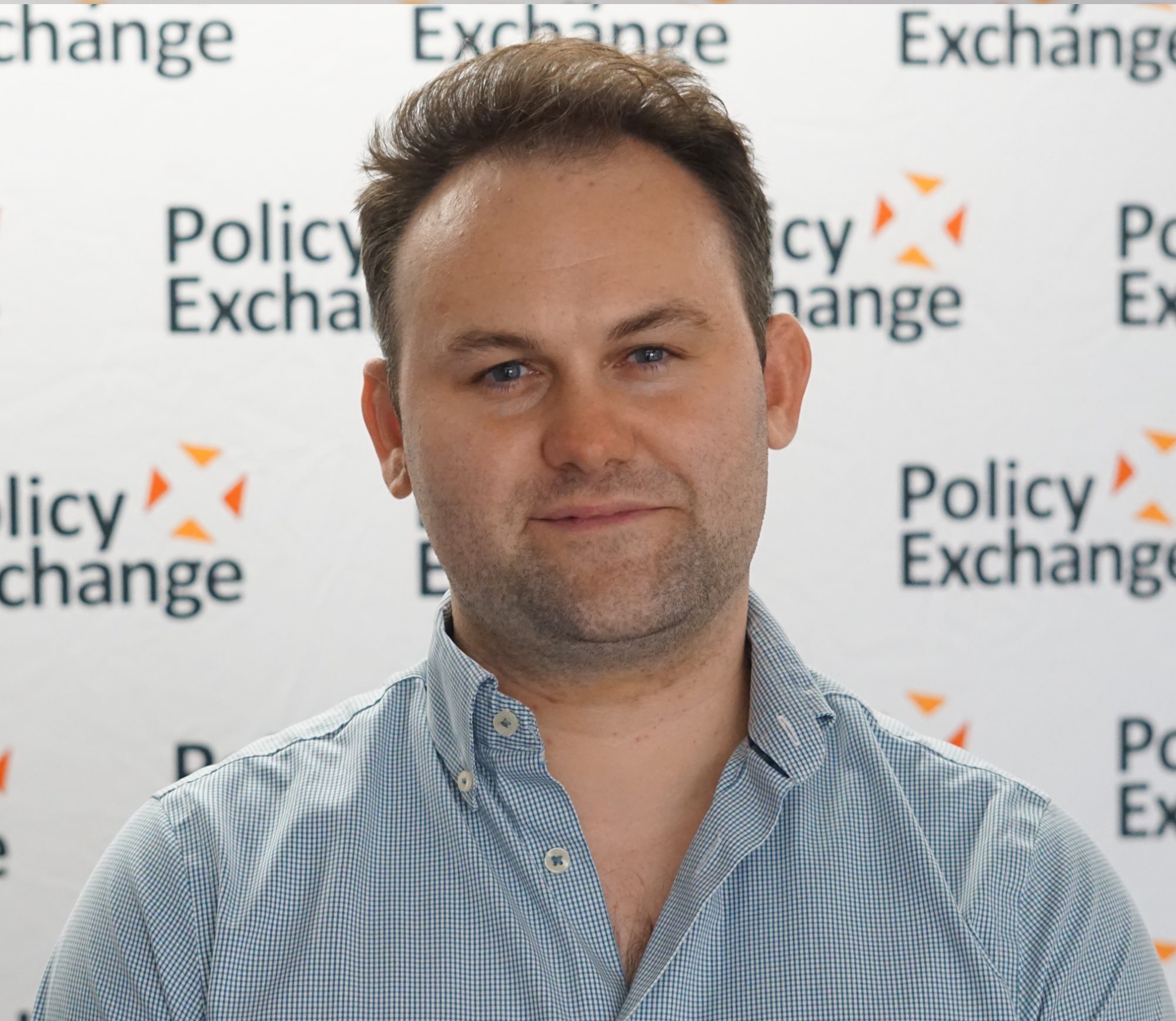
Robert Ede
Head of Health and Social Care (2020 - 2022)

Dr Sean Phillips
Head of Health and Social Care
One in ten people in England are now waiting for a routine procedure in the NHS (often described as elective or planned care). For many of these people, the wait will number several months or years. And the total number of people waiting will grow substantially over the next 12 months, as many of the estimated seven million people who did not seek treatment during the pandemic are referred by general practice.
This has prompted a fierce debate about the policy and management solutions required. Yet the voice of the consumer – the person waiting for treatment or support– remains underrepresented in the conversation. It does not have to be that way.
Back to the future?
Managing an elective backlog is not a new challenge, of course. Spiralling waits in the 2000s became the lightning rod for criticism of Labour’s handling of the English NHS. Tragic stories – such as Mavis Skeet, whose operation was cancelled four times due to a flu epidemic in Leeds ultimately leading to her death aged 74, resulted in inquiries and national condemnation. The political response was a series ‘targets and terror’ initiated by then Health Secretary Alan Milburn and the Downing Street Delivery Unit led by Sir Michael Barber. It delivered results but consumed enormous resource and political oxygen. Fast-forward two decades and we find ourselves in the position where waiting times and access again define the narrative. The performance figures on NHS waiting are published monthly, and now dominate the news cycle for 24 hours. Take one look at the polling data and you can understand the media frenzy. When asked to rank the most immediate healthcare priorities, half of the public choose access to routine services (which includes elective care), ahead of other salient issues such as NHS staff pay and continuing the successful vaccine rollout.
The issue will be at the top of the in-tray for the new NHS England Chief Executive. What can be done? Despite the recent decision of the Prime Minister to revive the delivery unit under the leadership of Emily Lawson, a return to the 2000s feels unlikely. Aggressive performance management in one narrow area could be deemed regressive as the system moves towards integrated care – indeed there is a suggestion that the new health and care bill would make such approaches impossible. Service leaders and politicians also recognise that asking the system to do more must be delicately balanced with concerns for a workforce recovering from the pandemic.
Another approach is required. One that learns the positive lessons from the pandemic in embracing technology, empowering individuals, and mobilising the collective capabilities of the NHS. The political narrative should not be that the backlog was simply addressed, but that we took the opportunities to do things differently, including addressing health inequalities along the way. This is something Policy Exchange is exploring as part of our project ‘A Wait on Your Mind’, which launches in the coming weeks. This blog fires the starting gun, setting out initial thinking in this area which has been informed by a roundtable, two patient focus groups and interviews with patient representatives, clinicians, providers, managers, and NHS partners.
COVID and the capacity constraint
It is clear there are no quick fixes. Constraints around capacity due to social distancing, workforce and the threat of a renewed wave of coronavirus infections this coming winter means that patient throughput will struggle to return to 100% in the short term. And attempts at service redesign (for example creating more elective-only treatment centres) bring lead times and cannot be applied universally. The latest NHS England operational guidance conceded this point, asking for Trusts to work towards 85% of the volume of activity compared to the 2019 baseline by this July.
The focus groups we have conducted suggest that people waiting for planned operations acknowledge the wider pressures. However, as the pandemic’s impact on the NHS lessens over the summer, impatience towards a full return of elective procedures will grow.
A more sophisticated relationship between the NHS and the independent sector would help to make a dent in the figures for specialities such as orthopaedics, dermatology and ophthalmology but will not be a silver bullet.
So, whilst every effort needs to be made to accelerate patient throughput, we need to look carefully at how we support patients whilst they wait. Our research has found that too much of the current debate focuses on the provider side – with the ‘consumer’ effectively side-lined in the discussion.
In the dark
A paper published last year from National Voices found that the availability of relevant information (the average wait, risk of exacerbation, availability of support to ‘wait well’) is in many cases entirely absent. Patients who are digitally savvy and well-off work around this, upskilling themselves in the terminology of the waiting list and making informed judgements about whether, for example, to self-fund care. Initiatives such as ‘My Waiting Time UK’ have tried to make the opaque data releases from NHS England accessible to the user – but have never been rolled out across Trusts in a systematic way. Privately, NHS managers admit worries that an informed and empowered patient, who knows their rights, could increase the workload and pressure upon admin staff.
We argue this is the wrong way of viewing the problem. Under the status quo, many waiters (inevitably the oldest, less well-off, and more marginalised groups in society) are left with uncertainty and ultimately, longer waits with a higher likelihood of condition deterioration. The statistics support this. Those living in areas with lower education attainment wait up to 14% longer for care – even when they are being treated in the same hospital as their more educated counterparts.
Nonetheless, attempts to democratise information about waiting times at a patient level still need to be conducted carefully to not inadvertently worsen health inequalities.
The ongoing vaccine rollout offers lessons here. Rather than relying on a paternalistic, ‘doctor knows best’ mentality, the successful reversal of gaps in uptake among certain ethnic minorities has relied upon a culturally appropriate and sensitive approach.
A plan for change
Reform should bring four changes.
Firstly, we need to ensure that regular revalidation of the elective waiting list is undertaken at a local level, to check a patient’s condition, additional risk factors and re-establish their wishes regarding treatment. Principles to underpin this process were published last October by NHS England.
Once this process has been concluded, we then need to begin to do more during the period in which people are waiting for procedures. Extending peer support schemes – so successfully rolled out for soon-to-be mothers for instance – as a way of improving people’s understanding of their conditions so they may play a greater role in managing them, both pre- and post-surgery. The work of the Centre for Perioperative Care offers further pointersinto how to ensure that patients are ‘match fit’ as the conversation shifts from ‘waiting’ to ‘preparation’.
Third, we need to expand the use of digitally-enabled technology to build health literacy and other forms of pre-habilitation – taking advantage of the adoption of such technology in healthcare settings from the pandemic (whilst taking care to not marginalise the digitally excluded).
Finally, we need to strengthen how we communicate with patients. As an organisation, the NHS is near unprecedented in the amount of data it collects. It has been gathering statistics on the waiting list since 1948. Yet much of this information bypasses the patient entirely, going straight to the health correspondents. It feels odd that a patient on the waiting list and their family must interpret what a story at a national level means for their own forthcoming procedure at their local hospital. A new approach to communication should foreground all options that may be in the patients’ interest. This should include the principles of patient choice and the option of self-funding care. Whilst only a fraction of people will be able to go private, we need to accept that for those individuals with the means to pay it may be the best route.
It remains up for debate precisely how elective waits should be conveyed. Some have advocated the use of ‘average waits’, whereas others suggest that normalising the use of the current clinical priority 1-4 methodologies will help the patient make sense of their position in the queue, whilst appealing to the British sense of fair play that has characterised the vaccine rollout. One recent study from Healthwatch found patients to be comfortable with waiting if they felt the A&E system was fair. Why not try to explore this idea for elective care?
Data and dates
Remarks made by Health Minister Edward Argar during a recent Westminster Hall debate suggest that the conversation around data transparency is evolving at a national level too. Information relating to waits greater than 52 weeks and up to 104 weeks will be published when the April figures are released in June. The Government should be commended for encouraging the NHS to make additional information public. This will take heat out of the 52-week figure which is so widely reported now, although attention may simply transfer onto the number of people waiting more than two years.
Regardless of the approach taken, there is an acceptance that there should be a pincer movement on both the most urgent cases (especially those awaiting diagnosis) and the longest waiters, rather than ploughing all energy into the latter. And maybe an emerging consensus that we need to address the need for info and support in the meantime – whilst people wait. We cannot just say it’s regrettable and then try to ignore the reality of living with it.
Efforts to improve communication and pre-surgical engagement with the patient should not override initiatives to boost capacity and efficiency of procedures. Both must come in tandem. Our final report will look in detail at how incentives and system redesign can be best improved to meet this multi-year challenge – which some estimate will take at least five years to clear – head on.
Not the only challenge
As we conclude, it is important to acknowledge that elective care is not the only area to be experiencing the ripple effects of the pandemic. Mental health, cancer, and other areas such as addiction and eating disorder services require proportionate focus and energy. But if we are to avoid a repeat of the scandals of the 2000s like Mavis Skeet, then a new approach to elective surgery will be required. And this must start with the patient. Because side-lining the “consumer” in the discussion is no longer a sustainable solution either politically or for the NHS.
The final report, A Wait on Your Mind will be released in the coming weeks. For further information please contact Robert.Ede@policyexchange.org.uk.
